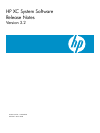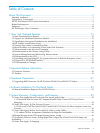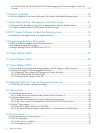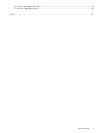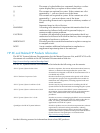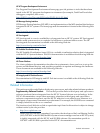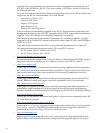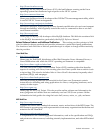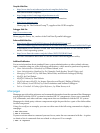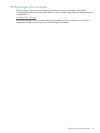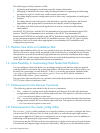
About This Document
This document contains release notes for HP XC System Software Version 3.2. This document
contains important information about firmware, software, or hardware that might affect the
system.
An HP XC system is integrated with several open source software components. Some open source
software components are being used for underlying technology, and their deployment is
transparent. Some open source software components require user-level documentation specific
to HP XC systems, and that kind of information is included in this document when required.
HP relies on the documentation provided by the open source developers to supply the information
you need to use their product. For links to open source software documentation for products
that are integrated with the HP XC system, see “Supplementary Software Products” (page 9).
Documentation for third-party hardware and software components that are supported on the
HP XC system is supplied by the third-party vendor. However, information about the operation
of third-party software is included in this document if the functionality of the third-party
component differs from standard behavior when used in the XC environment. In this case, HP
XC documentation supersedes information supplied by the third-party vendor. For links to
related third-party Web sites, see “Supplementary Software Products” (page 9).
Standard Linux® administrative tasks or the functions provided by standard Linux tools and
commands are documented in commercially available Linux reference manuals and on various
Web sites. For more information about obtaining documentation for standard Linux administrative
tasks and associated topics, see the list of Web sites and additional publications provided in
“Related Software Products and Additional Publications” (page 11).
Intended Audience
The release notes are intended for anyone who installs and configures an HP XC system, for
system administrators who maintain the system, for programmers who write applications to run
on the system, and for general users who log in to the system to run jobs.
The information in this document assumes that you have knowledge of the Linux operating
system.
Typographic Conventions
This document uses the following typographical conventions:
%, $, or #
A percent sign represents the C shell system prompt. A dollar
sign represents the system prompt for the Korn, POSIX, and
Bourne shells. A number sign represents the superuser prompt.
audit(5) A manpage. The manpage name is audit, and it is located in
Section 5.
Command
A command name or qualified command phrase.
Computer output
Text displayed by the computer.
Ctrl+x A key sequence. A sequence such as Ctrl+x indicates that you
must hold down the key labeled Ctrl while you press another
key or mouse button.
ENVIRONMENT VARIABLE The name of an environment variable, for example, PATH.
[ERROR NAME]
The name of an error, usually returned in the errno variable.
Key The name of a keyboard key. Return and Enter both refer to the
same key.
Term The defined use of an important word or phrase.
User input
Commands and other text that you type.
Intended Audience 7



